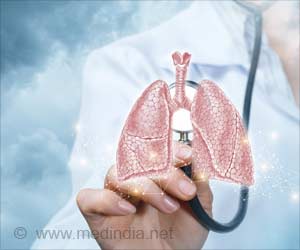.
The act of labor and vaginal delivery involves repeated breathing and pushing technique that creates increased emission of respiratory droplets.
During an active labor, complex gas clouds (respiratory droplets that contain gases and particles) can travel at a mean speed of 1.8 meters per second, which is about 30% faster than a gas cloud travels during normal breathing and at least 6% faster than gas clouds produced when coughing.
Researchers studied these respiratory droplets using Background-Oriented Schlieren imaging technique that makes the flow of invisible warm gases and cooler surrounding air visible.
Using this technique, researchers demonstrated that breath become progressively faster as the patient progressed from early labor to the second stage of labor.
This finding highlights the importance of providing appropriate Personal Protective Equipment (PPE) for healthcare workers in the field of obstetrics and gynecology, specifically when caring for suspected or confirmed COVID-19 patients.
In the next stage of research, they want to demonstrate that aerosols, which are infectious viral particles that can float or drift around in the air, are also present in these respiratory emissions.
Source: Medindia



